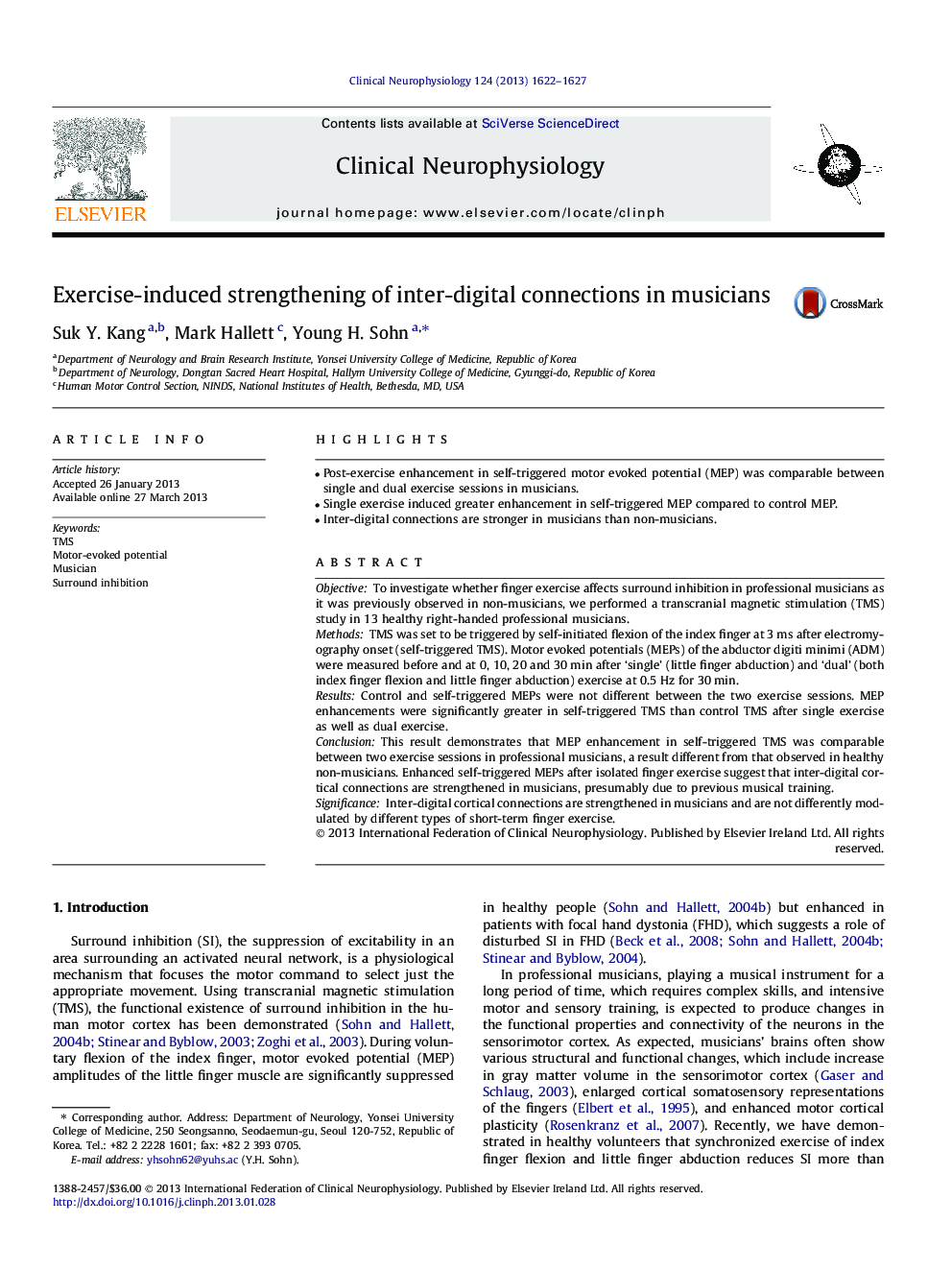| Article ID | Journal | Published Year | Pages | File Type |
|---|---|---|---|---|
| 3045188 | Clinical Neurophysiology | 2013 | 6 Pages |
•Post-exercise enhancement in self-triggered motor evoked potential (MEP) was comparable between single and dual exercise sessions in musicians.•Single exercise induced greater enhancement in self-triggered MEP compared to control MEP.•Inter-digital connections are stronger in musicians than non-musicians.
ObjectiveTo investigate whether finger exercise affects surround inhibition in professional musicians as it was previously observed in non-musicians, we performed a transcranial magnetic stimulation (TMS) study in 13 healthy right-handed professional musicians.MethodsTMS was set to be triggered by self-initiated flexion of the index finger at 3 ms after electromyography onset (self-triggered TMS). Motor evoked potentials (MEPs) of the abductor digiti minimi (ADM) were measured before and at 0, 10, 20 and 30 min after ‘single’ (little finger abduction) and ‘dual’ (both index finger flexion and little finger abduction) exercise at 0.5 Hz for 30 min.ResultsControl and self-triggered MEPs were not different between the two exercise sessions. MEP enhancements were significantly greater in self-triggered TMS than control TMS after single exercise as well as dual exercise.ConclusionThis result demonstrates that MEP enhancement in self-triggered TMS was comparable between two exercise sessions in professional musicians, a result different from that observed in healthy non-musicians. Enhanced self-triggered MEPs after isolated finger exercise suggest that inter-digital cortical connections are strengthened in musicians, presumably due to previous musical training.SignificanceInter-digital cortical connections are strengthened in musicians and are not differently modulated by different types of short-term finger exercise.
